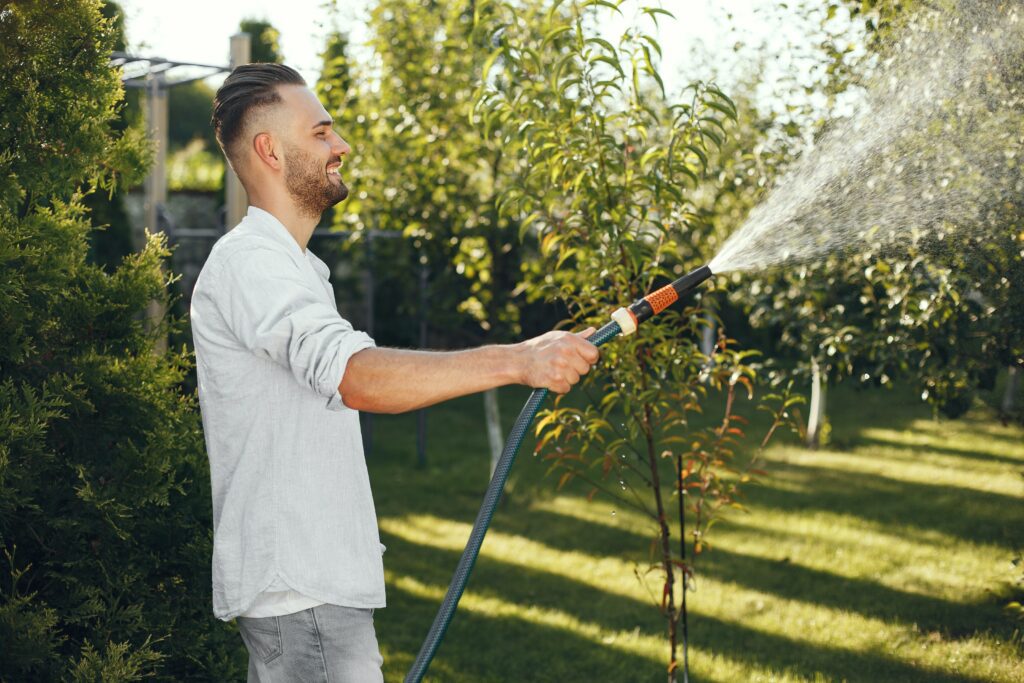As summers here in the Pacific Northwest get hotter and drier, many urban gardeners can tend towards over-watering their trees. Excessive watering is a common cause of tree decline, particularly in urban areas. Too much water leads to prolonged saturation of tree root systems. This excess water displaces oxygen, suffocating and ultimately killing the roots. While watering can play an important part in tree health, too much can be as bad as not enough. Achieving the proper balance of water for established trees requires careful consideration to ensure that they receive the right amount—not too much and not too little.
We cultivate a diverse range of trees here in Oregon and the surrounding areas, each with distinct watering requirements. Mature trees native to Oregon typically do not require additional watering, even during the summer, except for periods of intense heat. However, non-native trees may need more supplemental watering throughout the summer months. Again, this requirement varies depending on the species and the specific conditions.
Which Trees Need More and Less Water?
As a general rule, younger trees have higher water requirements. Moreover, the location of the trees can also impact their water needs. Trees planted in sunny areas or fast-draining soil typically necessitate more water, as do those in windy locations or where root growth is limited.
Especially beware over-watering your well-established and native trees. Older trees typically require less water. Native trees are generally more adapted to the local climate and therefore require less watering. Similarly, trees planted in shaded areas that are protected from the wind also have reduced water needs.


Only Water When Necessary
Tree owners should closely monitor weather conditions to determine when their trees may need extra water. Pay attention to factors like rainfall and temperature fluctuations. It is important that the entire root zone adequately drains after each watering, allowing the roots to access oxygen between watering sessions. Beware over-watering your trees without testing the soil first, regardless of outside temperature. The fundamental rule is to provide water only when necessary.
During the summer months, it is easy to accidentally overwater. To prevent this, it is crucial to monitor the tree’s actual water usage by checking the dryness of the root zone. If the surface feels dry, you can use a hard object, such as a screwdriver, to gauge moisture levels by pushing it into the soil around the roots. If you encounter resistance while trying to penetrate the soil, it suggests that the root zone may be dry.
How to Spot Over-Watering
Diagnosing overwatering can sometimes be tricky because the symptoms can resemble those of underwatering. Yellowing leaves, for instance, can indicate either too much or not enough water. However, certain telltale signs can help identify an overwatered tree. Excessive water can lead to fungus growth on the moist soil surface.
Major indicators of overwatering in trees include yellowing leaves, fungus growth on the soil surface, and the withering of new leaves.
To prevent damage caused by overwatering, it is essential to understand the specific watering needs of your tree and monitor the weather conditions. Above all, check for dryness and only water your tree when necessary.
Trying to diagnose a problem or have a question about your trees? We’re here to help! Call us to chat or Request a Free Estimate today.🌿
